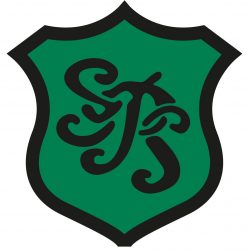We began the week with some grammar, learning about proper nouns. Once we got into the swing of things we came up lots of proper nouns and learned that they ALWAYS begin with a capital letter. Mrs Kennedy will be looking for this in our writing jotters from now on.
On Tuesday, we had our house treat – a trip to the park. It really was a treat , we had great fun and played together really well. We’re hoping to get out and about again soon.
We are continuing our cameras history trail. We learned about some of the first cameras which were pinhole cameras, these are simple cameras with a tiny pinhole – essentially a light-proof box with a small hole in one side. Light from a scene passes through the hole and projects an upside down image on the opposite side of the box, this is known as the camera obscura effect. To help us to understand this we made our own pinhole cameras. This was also a good technology lesson as we had to work hard to make sure our tube did not let in any light – including securing paper over the end with no gaps. We also had to make two tubes – one slightly smaller than the other so it could fit inside the larger one. All the groups managed it, with a few re-starts and adjustments. There was great excitement as we tried them out. Great teamwork too.
At the end of our History of Cameras project we will be presenting our learning to P3A. We have begun powerpoints to help us to do this. We will add one or two slides per week to build up our presentations as we go rather than do it all at the end. This is a good way of recording what we learn each week for us to look back on too. This week we worked in pairs to design title slides and produce one slide about pinhole cameras. We used a check list to make sure we completed the task correctly. A great start!
In numeracy, we continued our subtraction and time topics. We really are improving our mental subtraction skills. We looked at quick ways of subtracting teen numbers from 2-digit numbers by subtracting the 10 then the units. Some of us have been subtracting a single digit from a 2-digit number, with bridging. To do this mentally we took away the number of units to reach the multiple of ten, then subtracted the remaining units (e.g., to calculate 35 – 8 mentally, we would do 35 – 5 = 30, 30 – 3 = 27).
We have a new time wall display, it has a real clock and labels to help us to read the clock throughout the day. Some of our clocks from last week are on the wall too as well as examples of digital clocks. We will continue to practise quarter to the hour, especially on a digital clock. We will move onto ordering times next.
We are also continuing our ‘French Fridays.’ We are now great at numbers to 10, we can count out loud, as well as read and write the number words. We have begun to learn numbers to 20. Today we played a game where we rolled dice, said the numbers in French, added the numbers, said the total in French and then coloured the number on our sheet. The person with the most numbers coloured was the winner. This got quite competitive! I heard great French too.
In between all of this we have been very busy rehearsing our assembly. Thank you very much for helping the children to learn their lines and for help with props.
See you next Friday 🙂
P3B and Mrs Kennedy





















